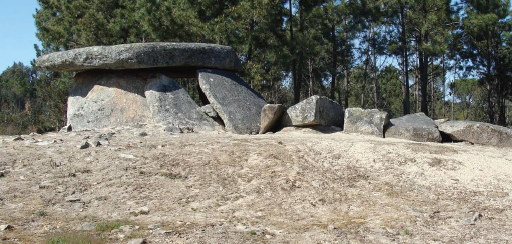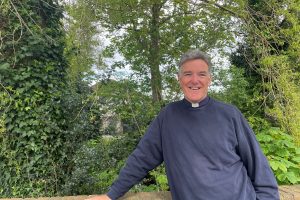 DR FABIO SILVA, a lecturer in the Sophia Centre at the University of Wales Trinity Saint David’s Lampeter campus, and Dr Daniel Brown, an astronomy lecturer at Nottingham Trent University, have caused a world-wide media sensation with their theory on the use of prehistoric tombs as ‘telescopes’.
DR FABIO SILVA, a lecturer in the Sophia Centre at the University of Wales Trinity Saint David’s Lampeter campus, and Dr Daniel Brown, an astronomy lecturer at Nottingham Trent University, have caused a world-wide media sensation with their theory on the use of prehistoric tombs as ‘telescopes’.
After examining 6,000 year old passage graves in Portugal, Silva concluded they functioned like telescopes without a lens.
Viewers within the tunnels would have had a chance to spot the first appearance of Aldebaran, the red star that is the brightest object in the constellation of Taurus before those outside. This was crucial for the rituals which timed seasonal migrations, such as taking sheep to higher pastures. The annual event, Silva argues, could have coincided with the star’s first appearance in the morning twilight each year. “This first rising of Aldebaran occurred at the end of April or beginning of May 6,000 years ago, so it would be a very good, very precise calendrical marker for the move to higher ground,” he said.
“The key thing is that a passage grave with its long corridor acts like a telescope that does not have a lens – it is similar to a long tube that restricts views to the sky close to the horizon.” Dr Daniel Brown added: “Seeing only a small portion of the sky while in a dark environment could help the eye fixate and prolong dark adaptation.”
These astronomical observations could have been linked to ancient rituals in which individuals were left on their own in the tomb with the remains of their ancestors. “There is a wealth of evidence now that these passage graves were not only used as tombs for burials, but they could also be used for rites of passage,” said Dr Silva. Such rituals, he adds, often involve the revelation of an astronomical secret to the initiate. “Could the secret be that the initiate could see the star rising days, if not a full week, before everybody else that was outside the passage grave could see it?” he said.
Dr Silva and the team are currently testing these ideas by simulating the conditions of celestial visibility from within the passage graves in the laboratory.
Dr Silva and the team‘s work was presented at the Royal Astronomical Society’s National Astronomy Meeting 2016 at a dedicated cultural astronomy session coordinated by Dr Brown. It was reported in the UK in The Guardian, The Daily Telegraph, New Scientist and Astronomy Now, and around the world on the BBC World Service; Der Spiegel (Germany); Archaeology magazine, WIRED magazine, CBS News, FOX News and The Washington Post (USA); New Zealand Herald (NZ); The Hindu (India); Jibada (China); and Globo (Brazil).
Dr Silva teaches the course on Skyscapes, Cosmology and Archaeology in the University’s Sophia Centre for the Study of Cosmology in Culture.















Add Comment